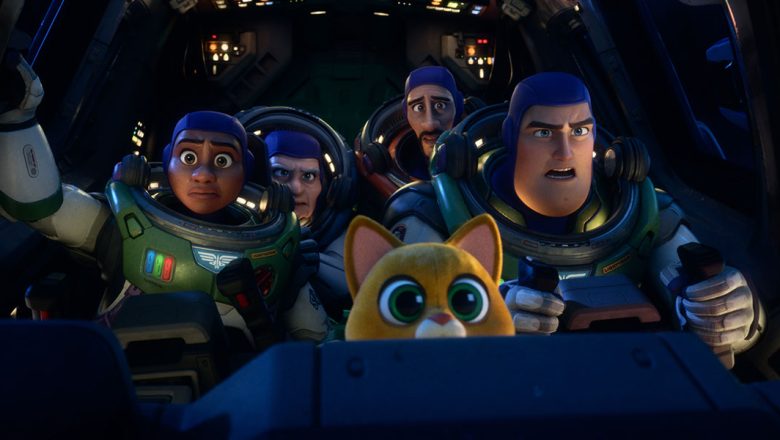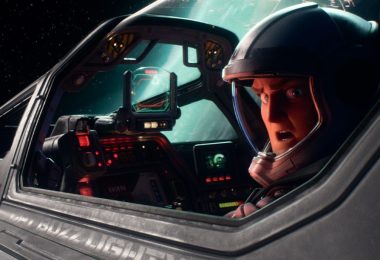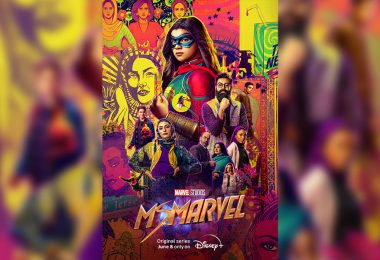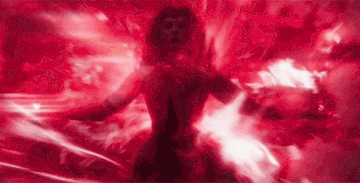By Courtney Potter
In short order, we’ll finally get to learn … the definitive origin story of Buzz Lightyear (voiced by Chris Evans), the hero who inspired the toy from the beloved Toy Story franchise. Disney and Pixar’s Lightyear finds the Space Ranger trying to find his way back home through space and time; though he’s got a loyal band of recruits willing to help, he’s also faced with an ominous obstacle in the form of a mysterious presence named Zurg (voiced by James Brolin). Can he finally go to infinity… and beyond?
To celebrate the film’s impending release, Evans and Brolin joined castmates Keke Palmer, who voiced Izzy Hawthorne, Taika Waititi, who voiced Mo Morrison, Dale Soules who voiced Darby Steel, and Peter Sohn, who voiced Sox—as well as director Angus MacLane, producer Galyn Susman, and composer Michael Giacchino—for a virtual press conference, where they shared some (inter)stellar stories about their experiences making the film.
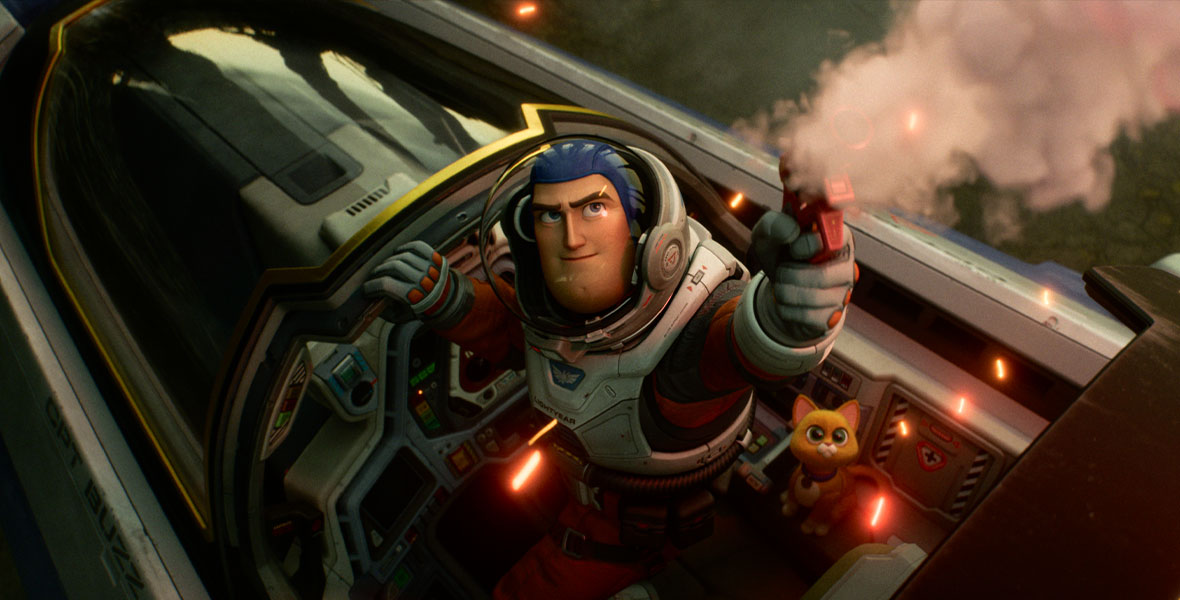
Evans on what he was most excited to bring to audiences with his portrayal of Buzz:
“Just getting to explore a character that we all know so well in a slightly more nuanced interpretation, you know what I mean? The Buzz that we all know is obviously a toy—and as a toy, there are certain ways that they can move through the world without the weight that we may carry. A toy knows its purpose… the impacts of the choices that we make as people are a little bit more consequential and it’s fun to put Buzz against that backdrop.”
Palmer on how she personally connected with Izzy, including the discovery of what the character cared about most:
“I connected with her love for her grandmother, Alisha, and the legacy that she wants to uphold. She wants to make her family proud—and that’s something that I think we all can relate to. And the fact that she’s not afraid to pivot, I really admired that about her. And I feel like she displays so many great leadership qualities—she knows how to push her friends forward; she knows how to see something in somebody so they can carry out their duty. She empowers others. I love the character.”
Soules on Darby’s past—and why it’s Buzz, in particular, that she forges a meaningful relationship with:
“Her past is very mysterious, and we want to keep it that way. We do know that she was incarcerated—and that, while everyone else on the Junior Zap Patrol is voluntary, she isn’t exactly voluntary; she’s there in the hope that she will reduce her parole if she does well. So that’s the part you know. The part you don’t know that I found out, that I really loved, was that I was treated with such respect by Buzz. That really informed the heart of her—because as gruff and tough as she looks, she does respond to being treated with respect. And he does that, and it works like a charm. In a lot of ways, I suppose she is like me; she’s no nonsense, she’s gruff. She’s very loyal to those who do treat her with respect.”

Waititi reflects on the film’s themes:
“I’ve made mistakes in my time. That kind of theme definitely resonates with me, especially the idea [of] taking on responsibility, or wanting to be the hero—wanting to be some kind of hero, to someone. But I think the theme that really resonates the most for me is this idea of seeking something that’s ‘out there,’ something in the future, something that’s not tangible and real, rather than what’s around you in the here and now. The grass is not necessarily greener on the other side.”
Sohn on working with his Pixar pal Angus MacLane, and how Sox might actually have a lot of canine qualities:
“I’ve known Angus for a long time and we nerd out a lot on our favorite sci-fi movies and stuff like that. So, it was really easy [when recording with him] to go from a militant sort of, ‘Yes, captain. Warp one; light speed!’ And then go into a friendly, ‘Hey buddy!’ kinda thing. Y’know, it’s so funny, when we were talking about Sox—he’s a cat, but he’s so loyal like a dog, and I’m a dog guy. And, so, I can totally jump into the idea of like, ‘Whatever you want, Buzz! I’ll bring you your snacks; I’ll fetch your newspapers!’ So it was really fun in the room.”
Brolin on realizing how intriguing his character really was:
“I’ve seen an [unfinished] version of the film, and I actually realized then that my character was much more complex then I had imagined. At this point, I’m not supposed to tell you everything that Zurg is… There’re so many things to learn in this movie. There’s a lot of messages about how we approach things and how we solve our problems and how we avoid them.”
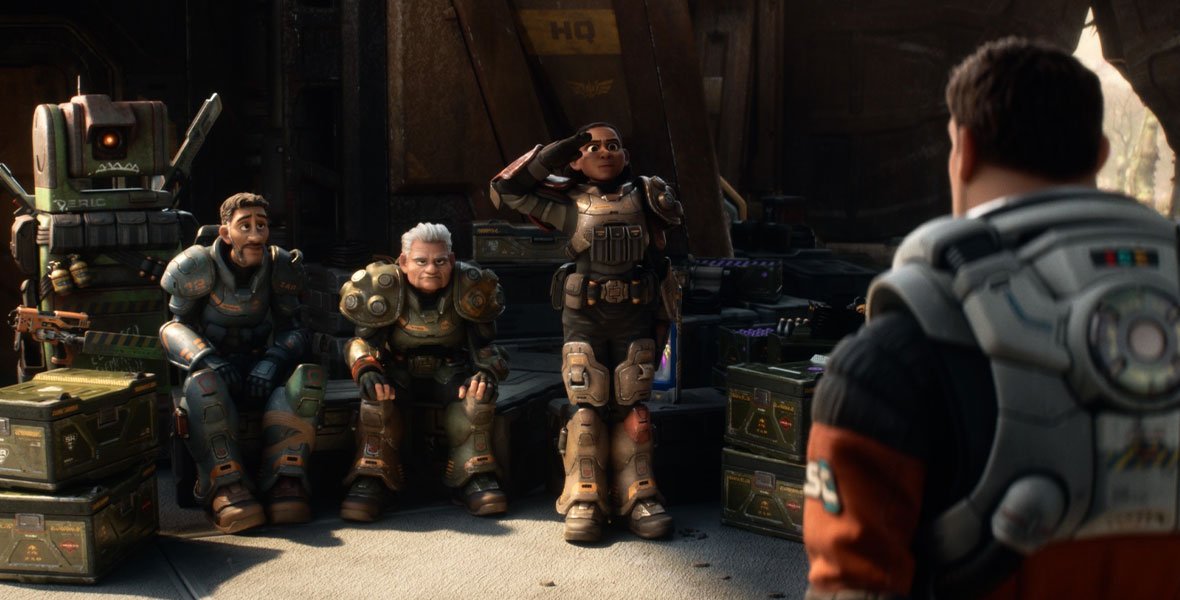
Susman on how animation technology has changed since she first started in the industry, as evidenced by Lightyear’s incredible imagery:
“The best change is that the tools have gotten so sophisticated that we now can hire artists instead of hiring technicians. And, so, we can bring in so much more artistry and perspective in the people who can work on these films. Lighting on the original Toy Story was literally typing lines of code; it was nothing like what you do when you light, right? So, we don’t do that anymore, obviously. And that’s been huge. It’s just opened up a huge number of people who can come in and embrace the medium.”
Giacchino on his childhood inspiration for Lightyear’s score:
“These are the kind of movies I grew up on. What I used to do was sneak a small tape recorder into the movie theaters when I was a kid, and I would record the movie audio—and it would have the audience response, all of that, on it. There was no VHS when I was growing up; there was no internet, nothing, so the only way for me to experience that movie again, when it was out of theaters, was to listen to it. So I would record them, and then I would sit at home and every night I would play them under my pillow. Because I loved to listen [to] how the sound worked in these movies, and how music worked with sound effects and dialogue and all of that. It’s ingrained in my head in a massive way. So, working on this was like—if someone had asked me at 12 years old, “Hey, you get to make your own one of these things; what do you wanna do with it?’ I’d say ‘Great—I would do this.’ And that’s what I love about working with Angus.”
MacLane on the history-making aspect of Lightyear being Pixar’s first film in IMAX:
“It looks amazing. And going in and out of IMAX [with certain scenes] was really fun. Sometimes we’d go, ‘I think it should be here,’ and you’d try it and think, ‘Nah, it didn’t work at all.’ The IMAX review process was so fun. We’d go to San Francisco, and we’d go to the IMAX Theatre at the Metreon—a group of us would go to this big theater, just like 10 people, in the middle of the pandemic. We’d see each other and say, ‘Oh, I haven’t seen you months; let’s watch part of our movie and see how it works in IMAX!’ And then when the IMAX technicians are calling and saying, ‘This is really cool’—they see everything. So that was probably the earliest best compliment—when the IMAX folks were nerding out about the movie and the experience they were getting. That meant a lot.”
See Disney and Pixar’s Lightyear only in theaters beginning this Friday, June 17!


